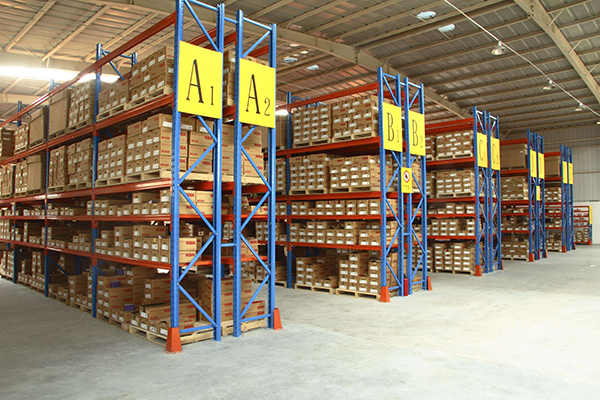Some Common Problems in the Installation and Use of Bearings
1. Attention should be paid to the following matters when using bearings:
A. Keep the bearing and its surrounding environment clean, even if the invisible small dust enters the bearing, it will increase the wear, vibration and noise of the bearing.
B. Use and install carefully, forceful stamping is not allowed, hammer is not allowed to directly hit the bearing, and pressure is not allowed to be transmitted through the rolling element.
C. Use appropriate and accurate installation tools, use special tools as far as possible, and try to avoid using cloth and staple fibers.
D. Prevent the corrosion of bearings. When taking bearings directly by hand, sweat should be thoroughly washed off and coated with high-quality mineral oil before operation. In rainy season and summer, special attention should be paid to rust prevention.
2. Common Problems in Installation and Use of Rolling Bearings
2.1 Requirements for Installation Surface and Installation Site?
Yes. If foreign bodies such as iron filings, burrs and dust enter the bearing, noise and vibration will occur during the operation of the bearing, and even damage the raceway and rolling element. Therefore, before installing bearings, you must ensure that the installation surface and installation environment are clean.
2.2 Do bearings have to be cleaned before installation?
The bearing surface is coated with antirust oil. You must clean it carefully with clean gasoline or kerosene, and then apply clean high-quality or high-speed high-temperature lubricating grease before installation and use. Cleanliness has a great influence on bearing life and vibration and noise. But we would like to remind you in particular that fully enclosed bearings do not need to be cleaned and refueled.
2.3 How to choose grease?
Lubrication has a very important impact on the operation and life of bearings. Here is a brief introduction to the general principles of grease selection. Lubricating grease is made of base oil, thickening agent and additives. The performance of different kinds of grease differs greatly from that of the same kind of grease with different grades. The allowable rotation limit is different. It is important to pay attention to the selection. The performance of grease is mainly determined by base oil. Generally low viscosity base oil is suitable for low temperature and high speed, and high viscosity base oil is suitable for high temperature and high load. Thickener is also related to the lubrication performance. The water resistance of the thickener determines the water resistance of the grease. In principle, different brands of grease can not be mixed, and even the same kind of thickener grease, due to the different additives, will have a negative impact on each other.
2.4 When lubricating bearings, the more grease is applied, the better?
When lubricating bearings, the more grease is applied, the better. This is a common misconception. Excessive grease in bearings and bearing chambers will cause excessive stirring of grease, resulting in extremely high temperature.
2.5 How to install and disassemble?
Do not hammer directly the end face and non-stressed surface of the bearing during installation. The bearing should be uniformly stressed by means of pressing blocks, sleeves or other installation tools. If the installation surface is lubricated, the installation will be smoother. If the fit interference is large, the bearing should be heated to 90 ~ 100 C in mineral oil and installed immediately. When disassembly encounters difficulties, it is recommended that you use the disassembly tool to pull out while carefully pouring hot oil on the inner ring. The heat will cause the inner ring of the bearing to expand, thus making it easier to fall off.
2.6 The smaller the radial clearance of bearings, the better?
Not all bearings require the minimum working clearance, you must select the appropriate clearance according to the conditions. In the national standard 4604-93, the radial clearance of rolling bearings is divided into five groups - 2 groups, 0 groups, 3 groups, 4 groups and 5 groups. The clearance values are from small to large in turn, of which 0 groups are standard clearance. The basic radial clearance group is suitable for general operating conditions, conventional temperature and interference fit in common use; for bearings working under special conditions such as high temperature, high speed, low noise and low friction, large radial clearance should be selected; for precision spindle and machine tool spindle bearings, smaller radial clearance should be selected; for roller bearings, large radial clearance should be selected. Keep a small amount of work gap. In addition, there is no clearance for separated bearings; finally, the working clearance after the installation of bearings is smaller than the original clearance before installation, because bearings have to bear a certain load rotation, as well as the elastic deformation caused by bearing matching and load.


 Company news
Company news